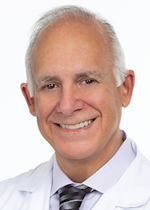I love practicing dentistry. I enjoy the staff, the patients, and experiencing the benefits of a practice that I grew with some select staff members who put the practice over the top. However, the body wears down. There are only so many times that you can bend over the chair before your neck and lower back tell you that they are done. It happened gradually, but at the age of 65, my back said, “All done!”
But was I done? I like to talk. I like the experience of the dental office. I’m a pretty good treatment planner. Patients have more confidence in me at this age than they did when I was in my forties.
So, the question is, how can you harness your wisdom, your ability to plan, and your ability to communicate, but avoid the back-breaking work? Become a director of dentistry. This role allows you to take advantage of your thinking skills while giving your body a break. Instead, you rely on the other skilled dentists on your team to do the hands-on work.
Related reading:
- Passing the baton: The young/old dentist dilemma
- 5 reasons dentists retire 7 years later than the average American (and how to fix that)
- What are you waiting for? Invest in your retirement now
When it comes to most businesses, there are two primary aspects to delivering a service or a product: sales and production. In dentistry and in most small businesses, sales and production are done by one individual. Even in group practices, each member of the group performs new-patient examinations and carries out the treatment. However, it doesn’t have to be that way.
We have a three-doctor practice. I started it as a practice limited to periodontics. I always enjoyed treatment planning and would plan both perio and restorative in a sequential fashion, then give patients a total fee along with alternative options. Eventually my son Matthew, a general dentist, finished his residency and wanted to practice with me. At that time, I did the exams and treatment planning and performed perio and implants. Matthew and I coordinated together on his patients, looked at the treatment plan that I put together for him, modified as necessary, and he put it into practice. Matthew would give me feedback on how close my treatment plan came to what he actually did, so that I could better calibrate my planning.
How the model works
When my back finally said “no” for the last time, Dr. Michel Furtado joined us as our periodontist. I did the same for Michel as I did for Matthew. The work that I planned to do myself became Michel’s work, and he modified the treatment plan as he saw fit. He did the same with me as Matthew did, advising me of the changes he made. We call this the director of dentistry model. Just as there is a medical director in a hospital, the same role can exist in a dental office.
When I’m not certain of the treatment plan, we have a weekly doctors’ meeting to go over cases. We also go over cases that are already in progress. We’ll often meet with other specialists who might be involved in our patients’ cases as well.
As the experienced doctor in the community, patients have confidence in me and therefore treatment acceptance barriers are removed. The doctors have full autonomy to make any changes to the treatment plans I develop, but the changes are usually minor. We don’t charge the patient additional fees for changes that might cost more, and we refund for any treatment I planned that turned out to be unnecessary.
Experienced doctors, you have a gift that you can offer to patients and younger doctors. You don’t have to do the physical work. Younger doctors, with the director of dentistry model, you have the ability to learn from the senior doctor’s experience. And because the older doctor has the wisdom to guide both you and the patient, the patient benefits and you do work that you might not have done at this stage in your career. It’s truly a win-win(-win!).
There is a way for you, an experienced doctor, to remain in the profession that you love. Become a director of dentistry.
Editor's note: This article appeared in the May 2022 print edition of Dental Economics magazine. Dentists in North America are eligible for a complimentary print subscription. Sign up here.







